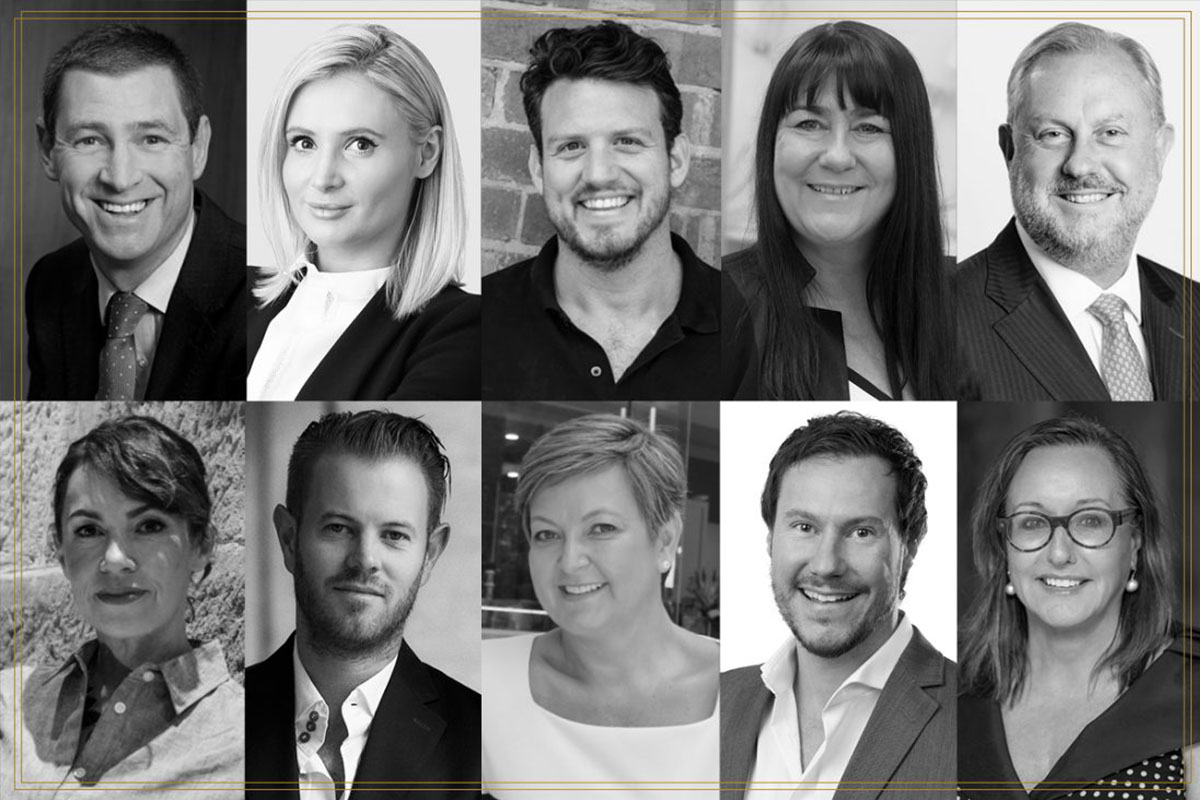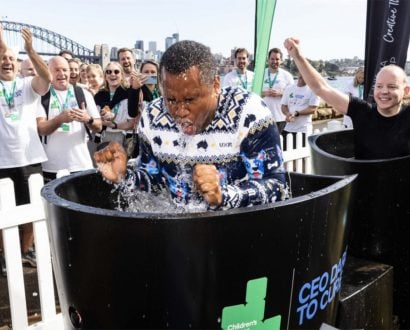In the eight years that The CEO Magazine’s Executive of the Year Awards has been running, this is the first time there has been equal gender representation among the finalists in the highly anticipated CEO of the Year category.
Five women and five men are vying for the coveted award, in contrast to last year when there was only one female finalist in the category.
“We’re absolutely thrilled,” Susan Armstrong, Content Director at The CEO Magazine, told Sky News. “We did push for more women to apply – this year we received about 10% more applications from females than last year, which is still not where we want it, but for the top award of CEO of the Year we’re thrilled that we have five women and five men in the running.”
The female contenders include Zena Burgess, CEO of the Royal Australian College of General Practitioners; Emma Hendry, CEO of Hendry Group; Fiona Johnston, CEO UM Australia; Michele Smith, CEO of North Eastern Community Hospital; and Kim Wethmar, CEO of TravelEdge.
The male finalists are John Winning, CEO of Winning Group; Andrew Ritchie, CEO of EstimateOne; Anthony Nantes, CEO of Wisr; Bobby Lehane, CEO of CHU Underwriting Agencies; and David Hackett, CEO of MLC Life Insurance.
“While there’s still is a long way to go, this recognition and promotion of strong, all-inclusive role models provides emerging female professionals with determination to aspire to leadership positions.” – Hendry Group CEO Emma Hendry
The finalists are not only proud to have their leadership achievements recognised, but also pleased to see an equal split of males and females.
“It is tremendous to see the equal representation of both men and women in this category,” Emma Hendry says. “It is testament to the enormous emphasis being placed upon equality, diversity and inclusion.”
Michele Smith adds: “For many years I have been looking forward to the day that women are identified as leaders, rather than female leaders. This year’s awards have given me and many other aspiring and inspiring leaders that moment.
“I am sincerely heartened that The CEO Magazine has presented a platform where all leaders, across diverse backgrounds, are inspired and encouraged to celebrate their success, and are recognised by the industry as finalists for this prestigious award.”
For Kim Wethmar, the equal representation demonstrates that women are starting to back themselves more often. “I don’t think we’re suddenly achieving more; I think we’ve started to appreciate just how valuable our contribution is in the workplace as mentors, role models and aspirational leaders,” she says.
“In our current climate with a focus on pay parity, the #metoo movement and women in leadership, it is refreshing to see our voices are being heard and, more importantly, listened to when it comes to equality.”
Fiona Johnston agrees, saying it’s important for “all walks of life” to be recognised, particularly those who are reluctant to publicly celebrate their own achievements. “It’s great to see this is the case with the 2019 Executive of the Year Awards,” she says.
“Diversity is more than just gender though; the unsung heroes – or people who are not comfortable being self-promoters, like me – need to be encouraged too. As ever, this should be about merit, not ticking boxes.”
“Good leaders, or anyone for that matter, should not be defined by their gender.” – Winning Group CEO John Winning.
It’s not only the female finalists who are buoyed by the 50/50 split, with the men equally excited by the positive step forward. “I feel very privileged to be among such quality candidates, including five exceptional women in Emma, Zena, Michele, Fiona and Kim,” Andrew Ritchie enthuses.
“I read recently that, among the ASX200, there are more CEOs named Andrew than there are women – we clearly have a long way to go. As a male CEO named Andrew, I must recognise just how much my gender has been a tailwind in my professional life, and we all need to make sure those tailwinds are felt by all.”
Describing the gender balance as “extremely encouraging”, John Winning insists diversity is a key factor in business success. “Good leaders, or anyone for that matter, should not be defined by their gender.
“Diversity is of huge importance to a business’s success and growth,” he asserts. “I am proud that the Winning Group is made up not only of different genders, but also of many different nationalities, ages and backgrounds. It’s our diversity that inspires innovation and drives our successes.”
A strong advocate for workplace diversity, Bobby Lehane points out CHU Underwriting Agencies was recently awarded the inaugural Australian Insurance Industry Award for Excellence in Workplace Diversity and Inclusion.
“This reflects a huge commitment to multifaceted diversity in our business,” he says. “Gender diversity and equal representation of males and females in these awards is great, but it should not be remarkable, it should just be how things are. The business case for diversity and inclusion within the workplace is very strong; there are volumes of data that support this. It starts at the top.”
“This is not about activism – this is about ensuring we all have and see the same set of opportunities in our lives, regardless of our gender.” – EstimateOne CEO Andrew Ritchie
Unfortunately, the gender balance demonstrated by the CEO of the Year finalists isn’t representative of boardrooms across the country. New data reveals there’s been a significant drop in the number of women in executive roles in Australia.
According to the recently released ‘Chief Executive Women (CEW) ASX200 Senior Executive Census 2019’, women make up just 25% of executive leadership teams across the ASX200, up from 23% in 2018.
The annual census, which measures year-on-year progress towards gender balance in Australia’s largest listed companies, found the number of female CEOs is just 12 (6%) in 2019, which has fallen from 14 (7%) in 2018.
“With few exceptions, progress towards gender balance at the executive level is slow, and at the very top it has gone backwards,” CEW President Sue Morphet says.
In order for gender equality to be achieved in the future, Ritchie believes it’s vital for today’s leaders to set an example for the next generation. “As senior leaders, we have a moral responsibility to ensure that there is a diverse set of people in leadership positions, such that anyone in our organisations can think, ‘One day that could be me,’” he says.
“This is not about activism – this is about ensuring we all have and see the same set of opportunities in our lives, regardless of our gender. The bonus is that this approach also leverages the talents of the many, not the few, almost certainly leading to better outcomes for all stakeholders.”
Indeed, the general consensus among the finalists is that having a balance of men and women in leadership roles has a positive influence on business performance.
“Women bring vibrancy, passion, empathy and innovation to the leadership circle, but our men are pretty fabulous too.” – North Eastern Community Hospital CEO Michele Smith
“There is a well-documented link between greater financial performance and female leadership participation in organisations,” Hendry says. “In my own organisation, having a more diverse group of leaders provides a dexterity of thought that enables greater problem-solving, enhanced communication and cultural influence.”
Winning adds: “Both males and females bring strong communication and leadership skills to a business and an equal balance is crucial to a company’s success and longevity.”
According to Smith, diversity adds colour to both life and business. “How beige the world would be if we all looked the same and all thought the same,” she says.
“Women bring vibrancy, passion, empathy and innovation to the leadership circle, but our men are pretty fabulous too. Together, in equal parts, we are a recipe for clever and inclusive decision-making that drives market growth.”
Wethmar also points out the benefits of having a broader range of perspectives when it comes to decision-making. “We view the world differently, so having a balance of each other’s points of view provides more well-rounded, successful outcomes,” she notes.
“The importance of this balance has seen a significant increase in the past few years, having been showcased as the theme for both 2019 and the upcoming 2020 International Women’s Day campaigns with #BalanceforBetter and #EachforEqual respectively.”
The winners of the 2019 Executive of the Year Awards will be announced during a glamorous ceremony at The Palladium at Crown, Melbourne on Thursday 14 November.







